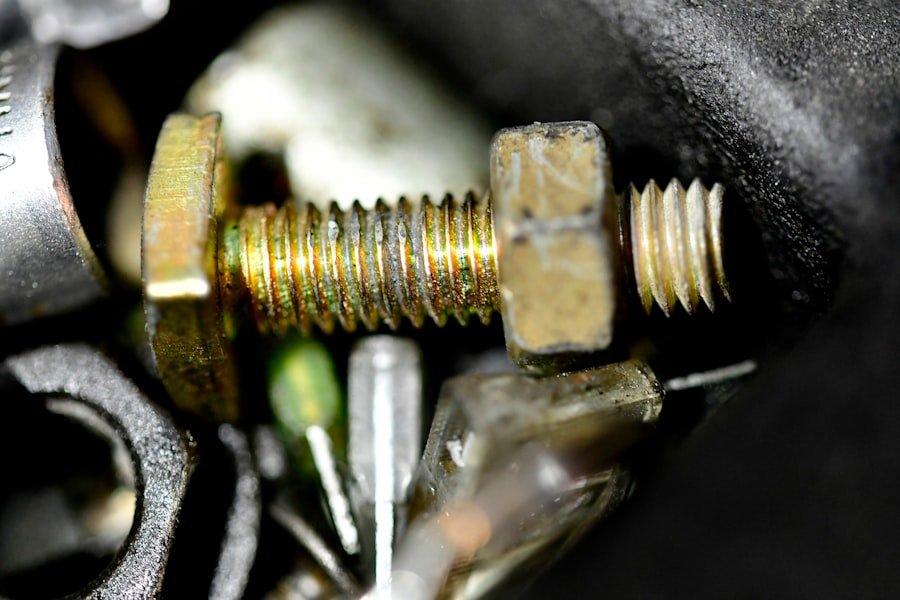Basic hand tools are essential for any DIY project or home improvement task. These tools are versatile and can be used for a wide range of tasks, from simple repairs to more complex projects. Some of the most common basic hand tools include hammers, screwdrivers, pliers, wrenches, and tape measures.
Hammers are used for driving nails and breaking objects apart. There are different types of hammers, such as claw hammers, ball-peen hammers, and sledgehammers, each designed for specific tasks. Screwdrivers come in various sizes and types, including flathead and Phillips head, and are used for driving screws into or out of surfaces.
Pliers are used for gripping, bending, and cutting materials, while wrenches are used for tightening or loosening nuts and bolts. Tape measures are used for taking measurements, and they come in different lengths and materials. In addition to these tools, other basic hand tools include utility knives, hand saws, levels, and chisels.
Utility knives are used for cutting materials such as cardboard, plastic, and drywall. Hand saws are used for cutting wood and other materials, and they come in different types such as crosscut saws, rip saws, and coping saws. Levels are used for ensuring that surfaces are straight and even, while chisels are used for carving and shaping wood and other materials.
Overall, basic hand tools are essential for any DIY enthusiast or professional tradesperson.
Key Takeaways
- Basic hand tools are essential for any DIY project and include items such as hammers, screwdrivers, pliers, and wrenches.
- Power tools, such as drills, saws, and sanders, can make tasks easier and more efficient, but proper safety precautions should always be taken when using them.
- Measuring and leveling tools, like tape measures and levels, are crucial for ensuring accuracy and precision in any project.
- Plumbing tools, such as pipe wrenches and plungers, are necessary for any plumbing repairs or installations.
- Electrical tools, including wire strippers and voltage testers, are important for any electrical work and should only be used by those with proper training.
- Painting and finishing tools, such as paint brushes, rollers, and sandpaper, are essential for giving any project a professional and polished look.
- Safety equipment, such as goggles, gloves, and ear protection, should always be worn when working with tools to prevent accidents and injuries.
Power Tools
Drills and Saws
Drills are used for making holes in various materials such as wood, metal, and plastic. There are different types of drills, including corded drills and cordless drills, each designed for specific tasks. Saws are used for cutting materials such as wood, metal, and plastic. There are different types of saws, including circular saws, jigsaws, reciprocating saws, and miter saws, each designed for specific cutting tasks.
Sanders and Grinders
Sanders are used for smoothing surfaces by removing material such as wood or paint. There are different types of sanders, including belt sanders, orbital sanders, and detail sanders, each designed for specific sanding tasks. Grinders are used for cutting, grinding, and polishing materials such as metal and stone.
Other Power Tools
In addition to these tools, other power tools include nail guns, impact drivers, rotary tools, and planers. Nail guns are used for driving nails into surfaces quickly and efficiently. Impact drivers are used for driving screws into surfaces with high torque. Rotary tools are versatile handheld power tools that can be used for cutting, grinding, sanding, and polishing a variety of materials. Planers are used for shaping and smoothing wood surfaces.
Measuring and Leveling Tools

Measuring and leveling tools are essential for ensuring accuracy in construction and renovation projects. These tools help ensure that surfaces are straight and level and that measurements are precise. Some of the most common measuring and leveling tools include tape measures, levels, squares, and laser levels.
Tape measures come in various lengths and materials and are used for taking measurements of distances and dimensions. They can be retractable or non-retractable depending on the task at hand. Levels come in different types such as bubble levels and laser levels and are used for ensuring that surfaces are straight and even.
Squares are used for marking right angles on surfaces to ensure that corners are square. In addition to these tools, other measuring and leveling tools include calipers, rulers, protractors, and angle finders. Calipers are used for measuring the distance between two opposite sides of an object.
Rulers are used for measuring distances in a straight line. Protractors are used for measuring angles between two intersecting lines or surfaces. Angle finders are used for measuring angles in tight spaces or hard-to-reach areas.
Overall, measuring and leveling tools are essential for ensuring accuracy in construction and renovation projects. Measuring and leveling tools play a crucial role in ensuring accuracy in construction and renovation projects. These tools help ensure that surfaces are straight and level and that measurements are precise.
Some of the most common measuring and leveling tools include tape measures, levels, squares, and laser levels. Tape measures come in various lengths and materials and are used for taking measurements of distances and dimensions. They can be retractable or non-retractable depending on the task at hand.
Levels come in different types such as bubble levels and laser levels and are used for ensuring that surfaces are straight and even. Squares are used for marking right angles on surfaces to ensure that corners are square. In addition to these tools, other measuring and leveling tools include calipers, rulers protractors ,and angle finders .
Calipers are used for measuring the distance between two opposite sides of an object . Rulers measure distances in a straight line . Protractors measure angles between two intersecting lines or surfaces .
Angle finders measure angles in tight spaces or hard-to-reach areas . Overall , measuring leveling tools play a crucial role in ensuring accuracy in construction renovation projects .
Plumbing Tools
| Tool | Usage | Size | Material |
|---|---|---|---|
| Adjustable Wrench | Tightening and loosening nuts and bolts | 6 inches | Steel |
| Pipe Wrench | Gripping and turning pipes | 14 inches | Cast iron |
| Plunger | Clearing clogged drains | N/A | Rubber |
| Pipe Cutter | Cutting pipes | 1/8 inch to 2 inches | Steel |
Plumbing tools are essential for any plumbing repair or installation project . These tools help plumbers DIY enthusiasts professionals complete tasks efficiently effectively . Some of the most common plumbing tools include pipe wrenches , pliers , pipe cutters , plungers .
Pipe wrenches adjustable wrenches come in various sizes types including monkey wrenches basin wrenches each designed specific plumbing tasks . Pliers adjustable pliers tongue-and-groove pliers slip-joint pliers water pump pliers each designed specific gripping turning tasks . Pipe cutters tube cutters ratchet pipe cutters each designed cutting pipes tubing quickly accurately .
Plungers come in various types such as cup plungers , flange plungers , accordion plungers , each designed specific drain-clearing tasks . In addition to these tools , other plumbing tools include pipe benders , pipe reamers , pipe threaders , faucet keys . Pipe benders tube benders come in various sizes types including manual benders , hydraulic benders , each designed bending pipes tubing without kinking or collapsing them .
Pipe reamers deburring tools come in various sizes types including inner/outer reamers , cone reamers , each designed removing burrs from the inside or outside of pipes . Pipe threaders come in various sizes types , including manual threaders , electric threaders , each designed threading pipes quickly accurately . Faucet keys come in various sizes types , including hex keys , square keys , each designed installing or removing faucet seats .
Overall , plumbing tools play a crucial role in completing plumbing repair or installation projects efficiently effectively . Plumbing tools play a crucial role in completing plumbing repair or installation projects efficiently effectively . These tools help plumbers , DIY enthusiasts , professionals complete tasks efficiently effectively .
Some of the most common plumbing tools include pipe wrenches , pliers , pipe cutters , plungers . Pipe wrenches adjustable wrenches come in various sizes types including monkey wrenches basin wrenches each designed specific plumbing tasks . Pliers adjustable pliers tongue-and-groove pliers slip-joint pliers water pump pliers each designed specific gripping turning tasks .
Pipe cutters tube cutters ratchet pipe cutters each designed cutting pipes tubing quickly accurately . Plungers come in various types such as cup plungers flange plungers accordion plungers each designed specific drain-clearing tasks . In addition to these tools other plumbing tools include pipe benders pipe reamers pipe threaders faucet keys .
Pipe benders tube benders come in various sizes types including manual benders hydraulic benders each designed bending pipes tubing without kinking or collapsing them . Pipe reamers deburring tools come in various sizes types including inner/outer reamers cone reamers each designed removing burrs from the inside or outside of pipes . Pipe threaders come in various sizes types including manual threaders electric threaders each designed threading pipes quickly accurately .
Faucet keys come in various sizes types including hex keys square keys each designed installing or removing faucet seats . Overall plumbing tools play a crucial role in completing plumbing repair or installation projects efficiently effectively .
Electrical Tools
Electrical tools play a crucial role in completing electrical repair or installation projects efficiently effectively . These tools help electricians DIY enthusiasts professionals complete tasks safely accurately . Some of the most common electrical tools include wire strippers , wire cutters , multimeters , voltage testers .
Wire strippers come in various sizes types including manual strippers automatic strippers each designed stripping insulation from electrical wires quickly accurately . Wire cutters come in various sizes types including diagonal cutters end-cutting nippers each designed cutting electrical wires cables cleanly accurately . Multimeters come in various types including digital multimeters analog multimeters each designed measuring voltage current resistance continuity accurately .
Voltage testers come in various types including non-contact voltage testers contact voltage testers each designed detecting the presence absence of electrical voltage safely accurately . In addition to these tools other electrical tools include cable pullers , fish tapes , conduit benders , knockout punches . Cable pullers come in various sizes types including manual pullers electric pullers each designed pulling cables through conduits ducts safely accurately .
Fish tapes come in various sizes types including steel fish tapes nylon fish tapes each designed pulling wires through walls ceilings safely accurately . Conduit benders come in various sizes types including manual benders hydraulic benders each designed bending conduits without kinking or collapsing them . Knockout punches come in various sizes types including manual punches hydraulic punches each designed punching holes through metal sheets boxes safely accurately .
Overall electrical tools play a crucial role in completing electrical repair or installation projects safely accurately . Electrical tools play a crucial role in completing electrical repair or installation projects efficiently effectively . These tools help electricians DIY enthusiasts professionals complete tasks safely accurately .
Some of the most common electrical tools include wire strippers , wire cutters , multimeters , voltage testers . Wire strippers come in various sizes types including manual strippers automatic strippers each designed stripping insulation from electrical wires quickly accurately . Wire cutters come in various sizes types including diagonal cutters end-cutting nippers each designed cutting electrical wires cables cleanly accurately .
Multimeters come in various types including digital multimeters analog multimeters each designed measuring voltage current resistance continuity accurately . Voltage testers come in various types including non-contact voltage testers contact voltage testers each designed detecting the presence absence of electrical voltage safely accurately . In addition to these tools other electrical tools include cable pullers fish tapes conduit benders knockout punches .
Cable pullers come in various sizes types including manual pullers electric pullers each designed pulling cables through conduits ducts safely accurately . Fish tapes come in various sizes types including steel fish tapes nylon fish tapes each designed pulling wires through walls ceilings safely accurately . Conduit benders come in various sizes types including manual benders hydraulic benders each designed bending conduits without kinking or collapsing them .
Knockout punches come in various sizes types including manual punches hydraulic punches each designed punching holes through metal sheets boxes safely accurately . Overall electrical tools play a crucial role in completing electrical repair or installation projects safely accurately .
Painting and Finishing Tools

Types of Painting Finishing Tools
Some of the most common painting finishing tools include:
Brushes and Rollers
Paint brushes and paint rollers are used to apply paint to surfaces. They come in various sizes and shapes, allowing for precise control and coverage.
Sanding and Smoothing
Sandpaper is a crucial tool for smoothing out surfaces before and after painting. It helps to remove imperfections, creating a smooth finish.
Specialized Tools
Paint sprayers are specialized tools used for large-scale painting projects or for achieving a specific texture or effect. They can be used to cover large areas quickly and evenly.
If you’re looking for some inspiration for sprucing up your home, check out this article on Boxing Day traditions. It’s always helpful to have some new ideas for organizing and decorating your living space, and this piece offers some unique insights into how different cultures celebrate and prepare their homes for the holiday season. Whether you’re looking for DIY projects or just some fresh decor ideas, this article is sure to provide some helpful tips for your own “tools house.”
FAQs
What is a tools house?
A tools house is a structure or designated area where tools and equipment are stored, organized, and maintained for various purposes such as construction, woodworking, gardening, and other DIY projects.
What are the common tools found in a tools house?
Common tools found in a tools house include hammers, screwdrivers, wrenches, pliers, saws, drills, measuring tapes, levels, and various power tools such as drills, sanders, and saws.
What are the benefits of having a tools house?
Having a tools house allows for better organization and storage of tools, making it easier to find and access the necessary tools for various projects. It also helps in maintaining the tools in good condition, prolonging their lifespan and ensuring they are ready for use when needed.
How to set up a tools house?
Setting up a tools house involves creating a designated space for tool storage, organizing the tools in a systematic manner, and implementing proper storage solutions such as tool chests, pegboards, shelves, and cabinets. It is also important to establish a maintenance routine for the tools.
What are some safety considerations for a tools house?
Safety considerations for a tools house include proper storage of sharp and hazardous tools, ensuring proper ventilation for areas where power tools are used, and implementing safety protocols for handling and using tools. It is also important to keep the tools house clean and free of clutter to prevent accidents.




















+ There are no comments
Add yours